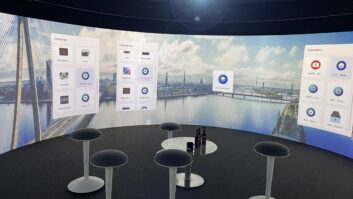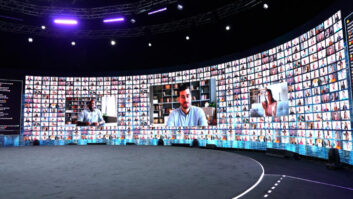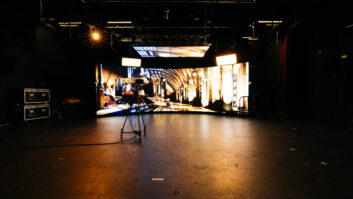
Commercial approaches and corporate tech proliferate within education, says columnist Rob Lane.
Ongoing budgetary constraints impacting upon the education sector – post-financial crash credit crunch; resulting austerity policies; foreign student applications squeezed by Brexit – have arguably magnified a more commercial approach now adopted by many institutions, particularly when it comes to AV. The advance of and demand for unified communications technology also has a big part to play. Ultimately this commercial mindset offers crumbs of comfort for integrators, hit by an overall reduction on AV spending across education.
As budgetary constraints have bitten, higher education institutions have been forced to look at ways of monetising their real estate assets. Not a new thing, of course, but the mother of invention often gets her way and for many education facilities commercial necessity is the new reality.
As universities in particular have felt the need to designate more buildings and rooms for commercial ventures – with UC front and centre – the need for corporate tech experts has increased.
Commercial pressures
Last issue featured a Solutions piece that I wrote, focused on the Winter Gardens Pavilion in Weston-super-Mare. Subject to a major refurbishment, it has been treated to extensive audio and video installations, undertaken by Design AV Europe.
Weston College acquired the Pavilion from North Somerset Council. However, it isn’t actually functioning as a university building at all – it’s an independent and commercial venue rented back to Weston College: an extreme example of how commercial pressures are prompting HE institutions to think outside the box when funding their tech-led facilities.
Ironically, in the case of Winter Gardens, UC isn’t on Weston College’s AV radar. Rather, the Pavilion is a commercial events space, comprised of four distinct areas, each requiring different audio and video technology and treatments. However, it’s clear that Design AV Europe wouldn’t have benefited had Weston College not taken a commercial approach to Winter Gardens.
Other HE institutions are integrating UC, often including office spaces alongside their commercial ventures. And their in-house tech evangelists look to the corporate sector for inspiration and also knowledge – education, it appears, is a two-way street. Of course, AV integrators and consultants also have a big part to play, and there are perhaps two corporate trends that are informing the design of education facilities more than any others: the rise of the informal meeting hub, and the new generation of adults entering the workspace.
Corporations have been redesigning workspaces to include more informal meeting hubs, equipped with collaboration technologies, along with quieter zones more suitable for dedicated projects work. Meeting-hub room design lends itself to higher education, where many meeting spaces are less formal by nature, allowing students and staff to work with one another remotely.
Next generation expectations
The generation entering the workforce is massively impacting how corporations re-imagine their building design, with today’s workers expecting the same sort of technology that they have access to at home and the same easy communication they enjoy day-to-day. This new-gen workplace revolution is informing the growth of UC tech, filtering down to education from enterprise.
There’s also a trend towards more distributed learning environments in higher education, powered by these collaborative technologies. Students can now book from-home video calls with their tutors, rather than arranging meetings in campus, and this further informs the new-gen comms mentality of workers when they leave higher education. This influences corporations further and then filters back again to the education sector – a virtuous circle.
“The main driver is student expectation,” Jon Garaway, education account manager, NEC Display Solutions, told me. “Informal collaborative learning is becoming standard in many universities because it meets the way students want to learn. They want social interactions to become part of their learning process at a time and place that suits them.”
Ultimately, whether it’s commercial necessity, student expectation, the influence of the enterprise sector on HE design and build, or a combination of the three, unified comms and other commercial-facing technologies are here to stay in the education sector. Good news for integrators, even as budgets continue to bite.







